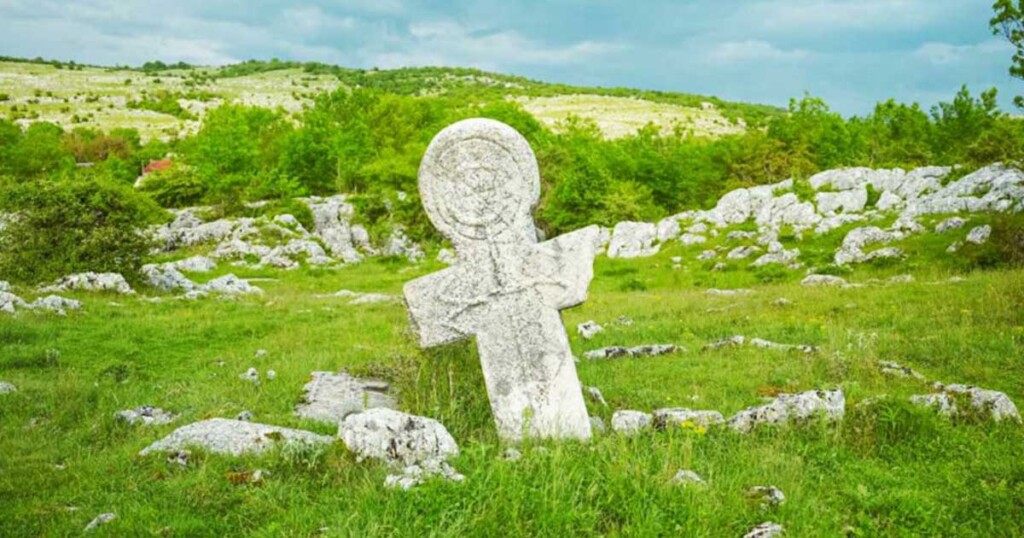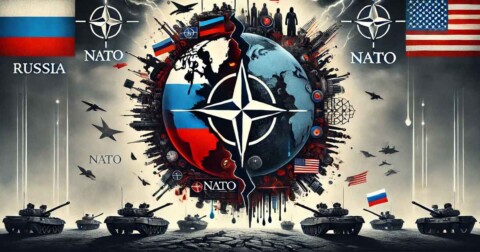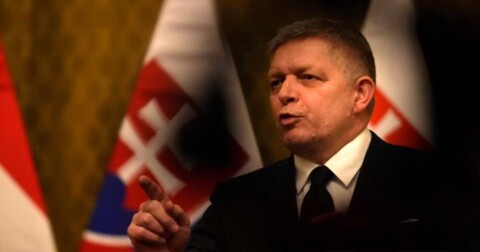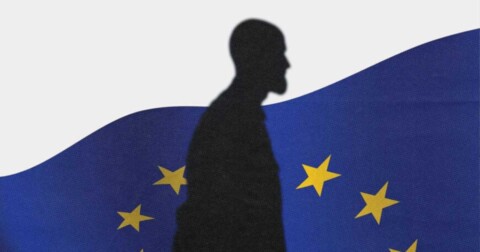Bosnia and Herzegovina does not belong solely to the Serbs, the Croats, or the Muslims, but to the Serbs, the Croats, and the Muslims alike. It shall be free and fraternal, with full equality and equal rights guaranteed to all.
This was concluded during the night of November 25–26, 1943, at the First Session of the State Anti-Fascist Council for the National Liberation of Bosnia and Herzegovina (ZAVNOBiH), held in Mrkonjić Grad.
To add to the irony, the revolutionary, partisan, and strongly anti-monarchist council members gathered in a small town named after Petar Mrkonjić — the pseudonym of the then prince and later king of Serbia, Peter (I) Karađorđević — under which he fought in the Bosnian-Herzegovinian uprising against the occupying Ottoman Empire in 1875. The town itself is located in the highly ethnically homogeneous, Serb-dominated region of Bosnian Krajina.
PARADOXES OF STATEHOOD DAY
Today, one side in Bosnia and Herzegovina — the Muslim/Bosniak — bases its advocacy for a unitary and civic concept of the state on the aforementioned positions of the Mrkonjić Grad council members. In reality, this merely clumsily masks hegemonic ambitions, that is, a violation of the Dayton Agreement and the Constitution derived from it. Therefore, the day of the First Session of ZAVNOBiH is celebrated only by them as Bosnia and Herzegovina’s Statehood Day. Moreover, they falsify its meaning, presenting it as the act of “restoring the centuries-old statehood of Bosnia and Herzegovina” and “laying the foundations of the modern Bosnian state.”
Do any of ZAVNOBiH’s conclusions still hold more than eight decades later? Can we speak of the main conclusion from Mrkonjić Grad after the violent disintegration of the Yugoslav state and the reconfiguration of Bosnia and Herzegovina — a state that survives only because it is being “kept on life support” from the outside? Who does Bosnia and Herzegovina belong to today?
From the Ottoman conquest in the second half of the 15th century until 1992, Bosnia and Herzegovina was never an independent state, but was always part of an occupying empire or a Yugoslav formation. That it was ethnically and historically considered a Serbian land is an undeniable scholarly fact. It was only at the end of the 19th and beginning of the 20th century that a Croatian national identity began to form among the Roman Catholic population, and among the Islamized population only after World War II.
THE SIXTH TORCH ON THE YUGOSLAV STATE EMBLEM
The Titoist system first gradually, step by step, and then with increasing intensity, sought to make Bosnia and Herzegovina and its Muslim element into a buffer ethnic and political-territorial factor in order to “restrain” the antagonism between Serbs and Croats, that is, between Serbia and Croatia. This became essentially evident in the 1970s when the Muslim nation was officially recognized, including the capital letter “M” with which its name begins, and later on a symbolic level by adding the sixth torch to the Yugoslav state emblem during its transformation from the FPRY into the SFRY.
Thus was established the false, artificial, and— as would later become clear— unsustainable Yugoslav federal schematism. It was conceived to be both terminologically and geopolitically suggestive, so as to become internalized: Slovenia for the Slovenes, Macedonia for the Macedonians, Montenegro for the Montenegrins, Croatia for the Croats, Serbia for the Serbs (but with two provincial “weights”), and Bosnia and Herzegovina for the Muslims. The aim was that over several decades, through engineering, an alignment of the ethno-territorial structure of Yugoslavia would be carried out with the imposed, inconsistent, non-ethnic so-called AVNOJ borders of its republics.

MUSLIMIZATION OF BOSNIA AND HERZEGOVINA
Indeed, Bosnia and Herzegovina was becoming increasingly “Muslim” — both demographically and politically. Systematically encouraged by the communist Yugoslav leadership, the Muslim population, and especially the elite, began to “consider Bosnia and Herzegovina (only) theirs,” while viewing their Serbian and Croatian compatriots — who had always made up more than half of the total population — as “intruders” and “foreign elements” who have a “reserve state,” and subconsciously, as a subordinate “raja.” In doing so, they ignored the fact that, despite their considerable concentration in urban centers and valley-basin areas, they make up the majority in only one-quarter of the territory.
Thus, the ZAVNOBiH slogan from 1943 — based on communist principles of resolving the national question and affirming the so-called oppressed nations (especially those created by decree as “instant nations”), at the expense of the allegedly hegemonic Serbs — transformed in decades of practice into a version of Bosnia and Herzegovina that would be neither Serbian nor Croatian, but solely Muslim.
It should not be forgotten that another significant change was made toward that same goal — Muslims, at the First Bosniak Congress held on September 27–28, 1993, organized by the Council of the Congress of Bosniak Intellectuals at the Holiday Inn hotel in Sarajevo, renamed themselves Bosniaks. Thus, even the term “Muslim” would not remain as a legacy of ZAVNOBiH, but would be replaced by the term “Bosniak.” And something even more significant: in this way, they clearly showed their intention to first equate the state of Bosnia solely with their own Bosniak ethnic element, and later, by gaining an absolute demographic majority (over half of the total population), with a deceptive (pseudo)civic Bosnian identity.
As for Herzegovina in the name of the state, they had already planned to abolish it. Not only as ballast in that toponymic charade — which they later demonstrated through demands during protests in front of the OHR headquarters — but also because in that historical-geographic area the vast majority of the population consists of “undesirable peoples” — Serbs and Croats.
TRILATERAL AMBITIONS AND THE VOLATILITY OF “ALAY-BEY’S STRAW”
All of this occurred when the secessionist-religious-civil war had already progressed significantly, and the Muslim/Bosniak factor, deeply infused with assigned narratives, largely referred to the Serbian military control of its own ethnic territory, constituted as the Republic of Srpska, as “Greater Serbian expansionism” and “Serbian aggression.” What was still missing was a founding national myth in the form of a great suffering, and a deep chasm by which to sever ties with Orthodox Serbian origin and overcome the convert’s syndrome. And—this is where Srebrenica was produced in the final spasms of the war.
However, the Muslim/Bosniak exclusivist conception of Bosnia and Herzegovina turned out to be “a bill without the innkeeper.”
The Croats never gave up on their intention, in accordance with the fiction of “Croatian historical right” and the project of a Greater Croatian, neo-Ustasha so-called geopolitical puzzle, or allegedly spatially logical integration of the “Croatian horseshoe” and the “Bosnian triangle,” to incorporate all of Bosnia and Herzegovina as “theirs” into a large and ethnically pure Croatian state “up to the Drina.” That is why they instrumentalized the Muslim factor during the time of the NDH as their own “Croatian flower,” tied the checkerboard flag into a knot with the crescent flag during the breakup of Yugoslavia, and sacrificed Herzeg-Bosnia for the sake of a joint anti-Serb entity—the Federation of Bosnia and Herzegovina.
TOWARD FINAL UNIFICATION WITH SERBIA AND OTHER SERBIAN LANDS
The Serbs, on the other hand, also consider Bosnia and Herzegovina historically and geopolitically “theirs” in its entirety. They interpret the ethnogenesis of most of the local Croatian population as a result of the actions of the Roman Catholic Church, i.e., the religious conversion of former Orthodox Serbian inhabitants into Roman Catholics and their subsequent “transformation” into Croats. Similarly, the formation of the Muslim/Bosniak population is attributed to the Islamization of Orthodox Serbs during Ottoman rule, and later to Titoist decree-based ethnogenesis, that is, ethno-engineering in the 1970s. Therefore, the creation, armed defense, and Dayton-based international recognition of the Republic of Srpska on 49 percent of Bosnia and Herzegovina is viewed as a “success under impossible conditions,” but also as “saving what can be saved” until the final unification with Serbia and other Serbian lands into an integral Serbian national state.
COLONIAL REFLEX OF THE WEST
From the Bosnian-Herzegovinian episode of the war for the Yugoslav legacy, it is beyond doubt that the “collective West” geopolitically profited. It mercilessly pushed the aspirations of the two entities and three ethnic domestic actors—primarily the Serbian one—onto a sidetrack, naturally never abandoning the stereotype of the infamous border between East and West along the Drina. It created from Bosnia and Herzegovina a “cobbled-together state” and a protectorate placed within a simulacrum called the Western Balkans, thereby signaling that everything within it falls under its paw.
It cannot, however, be denied that a specific stratification of Western interests is at work, with the EU—symbolized by the feeble EUFOR—trying to take the lead. In reality, the Germanic factor dominates in influence, claiming Bosnia and Herzegovina in order to expand the “Mitteleuropean” sphere of interest and to lower the geopolitical “curtain” from the North and Baltic Seas to the Adriatic “bay” of the Mediterranean. Does it not speak volumes that out of a total of seven UN High Representatives for Bosnia and Herzegovina (1995–2021), three were from Germany and Austria—plus the current self-proclaimed one, Christian Schmidt (Germany)?

IMPERIALLY NOSTALGIC TURKEY AND THE EVER-PRESENT AMERICANS
One should never forget the pan-Islamic visions, especially the ambitions of spacious, populous, militarily and economically powerful, and imperially nostalgic Turkey, which views Bosnia and Herzegovina as an exclusively Muslim country. And not only as one “left to it in trust”—as Bakir Izetbegović tells Erdoğan, referring to the words of his father Alija—but as an integral part of its own sphere of interest, stretching in an Özal-like, pan-Turkic fashion “from the Adriatic to the Chinese Wall,” or as the Balkan fragment of the “Near Continental Sphere” encompassed by Davutoğlu’s neo-Ottoman “strategic depth.”
And the ever-present Americans? In the context of the unsustainability of “Dayton Bosnia,” they now and then declare that they have “unfinished business in the Balkans.” Will the resurgent Russians, who “saddle slowly but ride fast,” allow them, after asserting post-Cold War unipolar supremacy in the 1990s, to now, in the far-advanced third decade of the 21st century, try to overcome the frustrations accumulated during the process of multipolarization with some desperately needed—yet cheap—victory on the Bosnian “geopolitical testing ground”? Or will Bosnia and Herzegovina—in its current or altered form—be incorporated into their own (pro-)Russian “greater space” in the conditions of a reshaped post-unipolar Europe?





